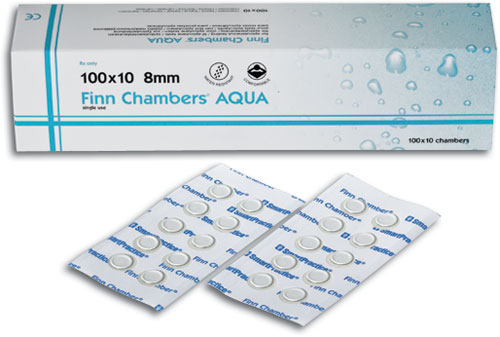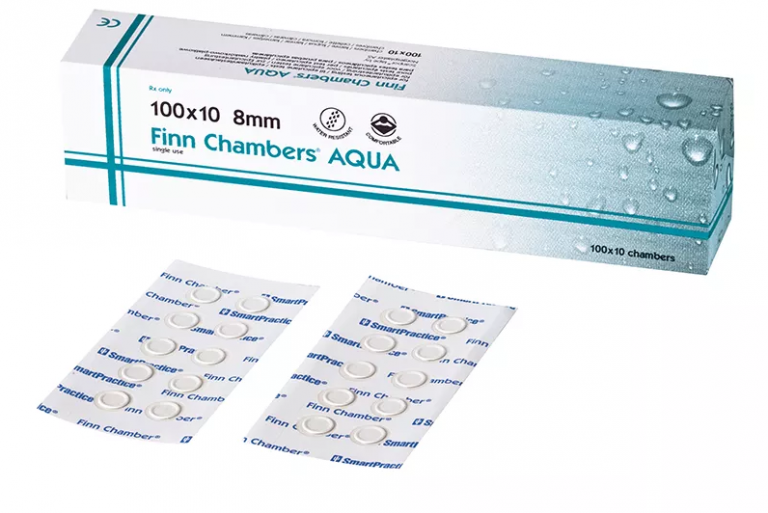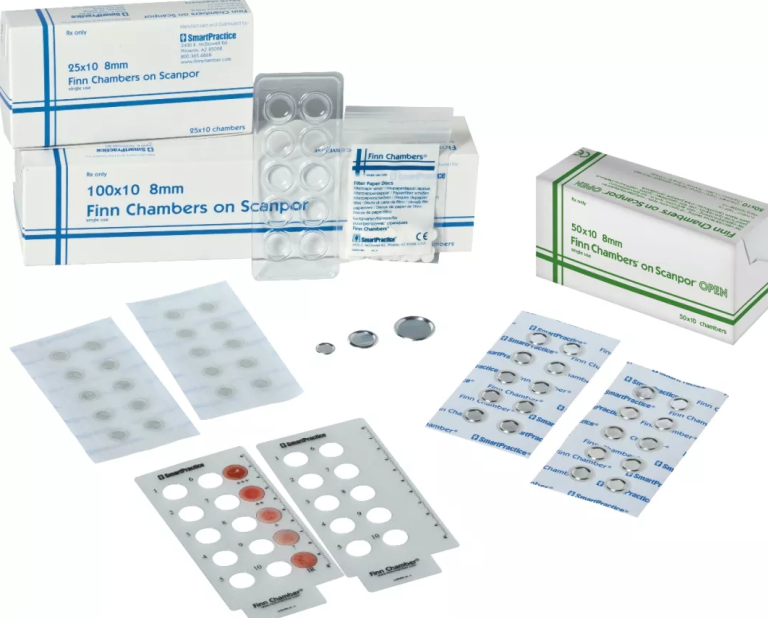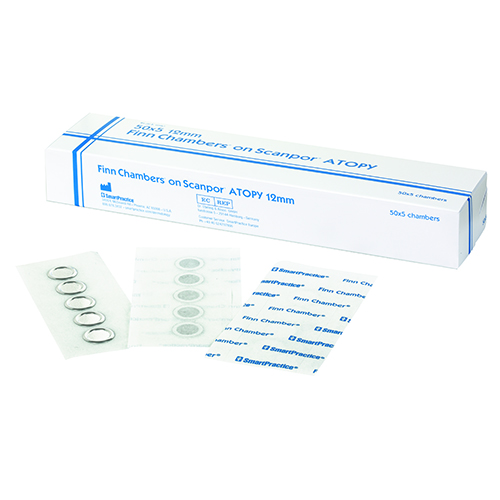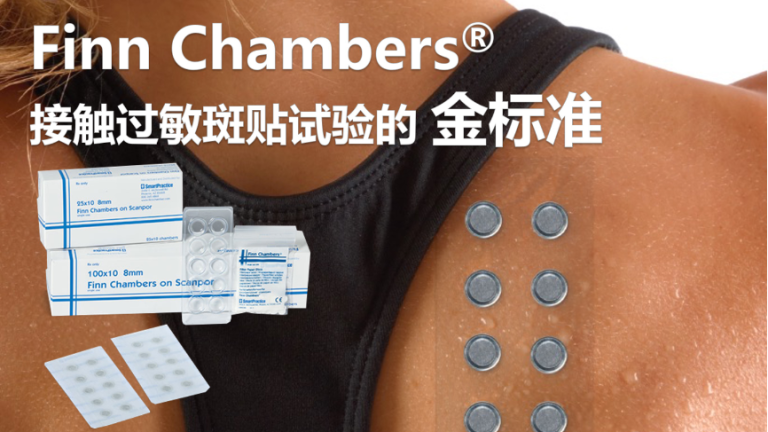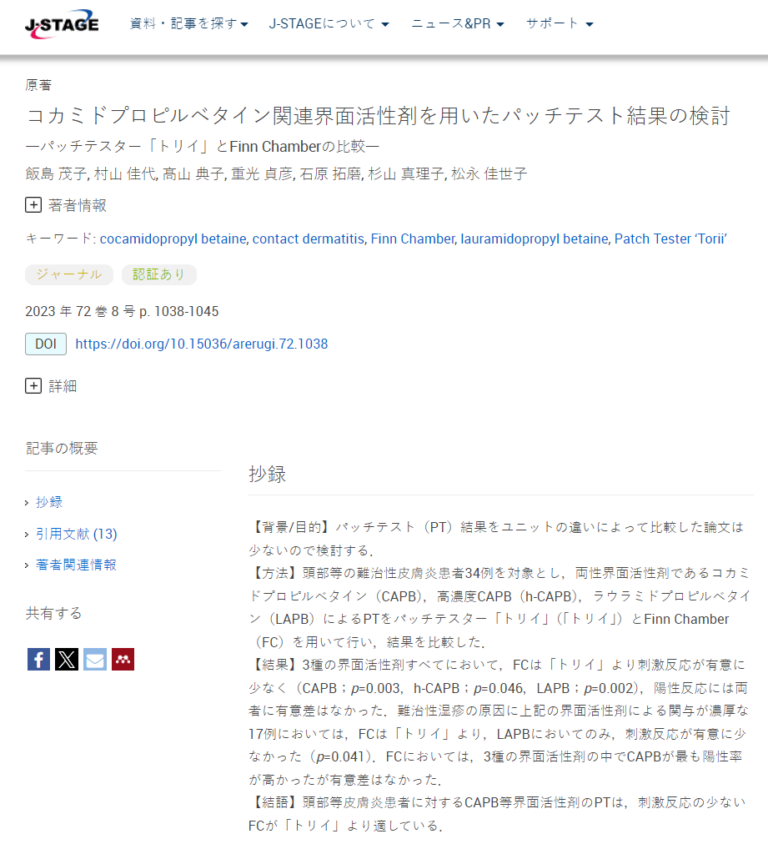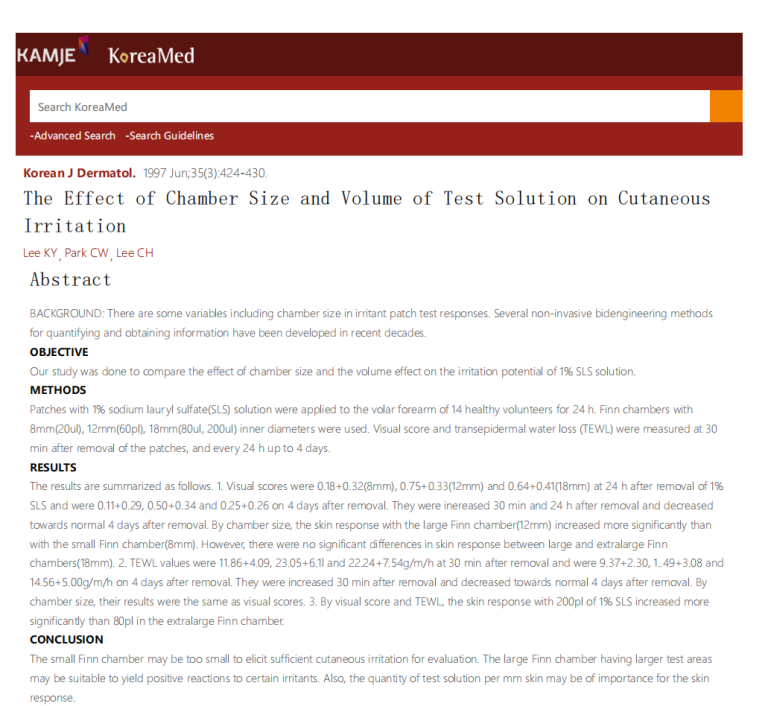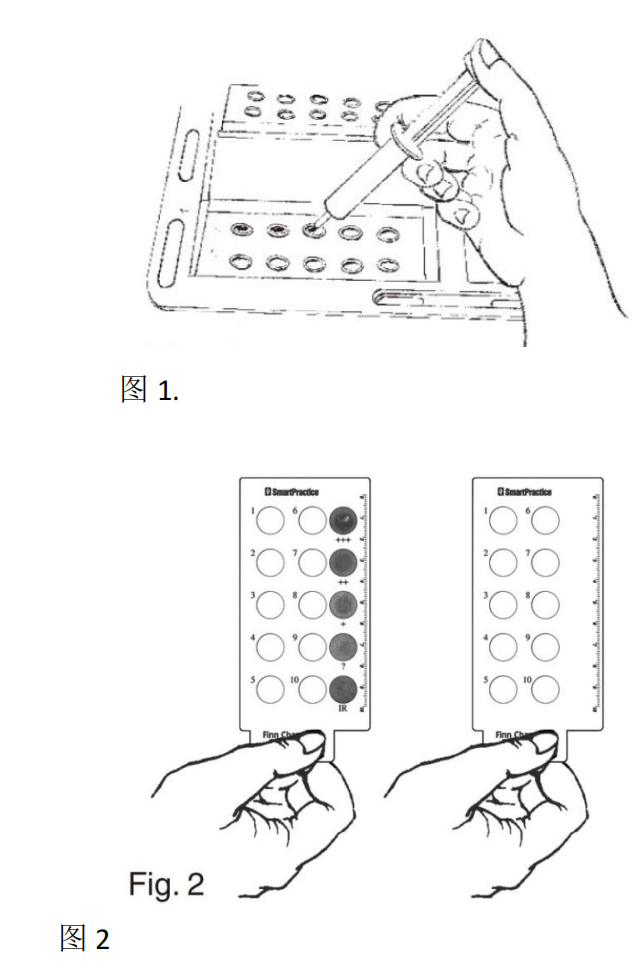斑帖试验中常见的几个问题
近来,很多客户反馈在做斑贴试验的时候遇到一些问题,我们选择了一些常见的问题并根据”Allergic Diseases–From Basic Mechanisms to Comprehensive Management and Prevention“(过敏性疾病——从基本机制到综合管理和预防)一书中“Epicutaneous Patch Testing in Type IV Allergy Diagnostics: State of the Art and Best Practice Recommendations“(表皮斑贴试验在 IV 型过敏诊断中的应用:最新进展和最佳实践建议)的章节里给出了几个判断。
1.去除斑试器后皮肤出现印记
一些客户在斑贴试验完毕后,去除斑试器时,发现受试者的手臂上小室周边出现一圈印记,不确定是不是过敏反应。在这本书3.2 Test Exposure Systems章节里是这样描述这个问题的:
The little impressions that the chambers leave on the skin when removing the test allow for assessing correct application and tight fit of patches.
译文:移除斑试器时小室在皮肤上留下的小印记可用于评估贴片是否正确应用和是否紧密贴合。
结论:在完成试验并移除斑试器时,皮肤上出现斑试器小室印记表明了斑试器的小室与皮肤的贴合度及小室的封闭性是良好的。
2.去除斑试器后皮肤出现红环
当移除斑试器时,发现受试者的手臂上出现一圈小室形状红环,在排除受试者在试验期间局部受压(常见前臂试验)外,需要考虑加载的用量。在这本书的4.1 Dosing of Chambers章节里是这样描述的:
The critical factor for sensitisation and elicitation of contact allergy is the “dose per unit area” (Friedmann 2006). Therefore, it is important that the dose of allergen is standardised for each type of test chamber (Johansen et al. 2015; Mahler et al.2019a). For example, for 8 mm Finn Chambers® 20 mg of each allergen in petrolatum (approximately 40 mg/cm2) is deposited from the syringe into the chamber such that it fills the well of the disk but does not extrude when the patch is applied to the back (Bruze et al. 2007b). For aqueous-based allergens, small filter papers are placed in the well and these will hold around 15 μL of liquid. The dosing of liquids is strongly recommended by means of a micropipette (Frick-Engfeldt et al.2010).“
致敏和诱发接触性过敏的关键因素是“单位面积剂量”(Friedmann 2006)。因此,重要的是要为每种类型的测试室标准化过敏原剂量(Johansen 等人 2015;Mahler 等人 2019a)。例如,对于 8 mm Finn Chambers®,将凡士林中的每种过敏原 20 毫克(约 40 mg/cm2)从注射器注入室中,使其填满小室底部,但在将贴片贴到背部时不会挤出(Bruze 等人 2007b)。对于水基过敏原,将滤纸片放在孔中,这些滤纸将容纳约 15 μL 液体。强烈建议使用微量移液器加注液体(Frick-Engfeldt 等人 2010)。”
总结:加载试验样品时,无论样品是液体还是固体,应该确保它们填满小室,贴皮肤上时,轻压小室边缘确保小室封闭且没有多余物质被挤出。由于检测物质的形状不同,特别是矿脂类物质的剂量需要培训和一定经验,确保多次操作仍能将剂量变化保持在有限范围内。
3.测试部位皮肤痒
一些参与化妆品试验的受试者反馈在接受斑贴试验的皮肤部位非常痒,揭除斑试器时,出现皮肤泛红的情况。参考《化妆品安全技术规范2015》对受试者的选择避免13种情况下的受试者外,该书的第9节 也对胶带刺激做了描述:
Subjective complaints. Itching at the site of applying the patches is commonly observed, it can either be due to a positive patch test reaction or as a result of tape irritation. However, some patients experience more itch immediately after removal of the tape (Mose et al. 2010; Curto et al. 2014). Various subjective complaints of patch-tested patients have occasionally been reported in the literature (Fowler and Zirwas 2018). There is no evidence of a cause-effect relationship.
主观投诉:贴片处通常会发痒,这可能是由于贴片测试呈阳性反应或胶带刺激所致。然而,一些患者在撕下胶带后会立即感到更痒(Mose 等人,2010 年;Curto 等人,2014 年)。文献中偶尔会报道接受贴片测试的患者的各种主观投诉(Fowler 和 Zirwas,2018 年)。没有证据表明存在因果关系。
结论:斑试器因为考虑封闭性试验而采用粘合性佳、低过敏丙烯酸基粘合剂的医用胶布。一篇名为Nonallergic Reactions to Medical Tapes*(对医用胶带的非过敏性反应)的文章给出一个结论:尽管有0.3%的患者报告有胶带过敏,但真正的胶带过敏很少见。更常见的是,患者会出现刺激反应。真正的胶带过敏和对胶带的非过敏性反应在机制上是不同的。
*此文章原文地址:https://www.liebertpub.com/doi/abs/10.1097/DER.0000000000000098?journalCode=der
对Epicutaneous Patch Testing in Type IV Allergy Diagnostics: State of the Art and Best Practice Recommendations这本书有兴趣的读者可以点击此处获取,pdf,504kb.: 提取码: 7x6u .


